SIEBE GORMAN 12 BOLT DIVE HELMET CA 1953
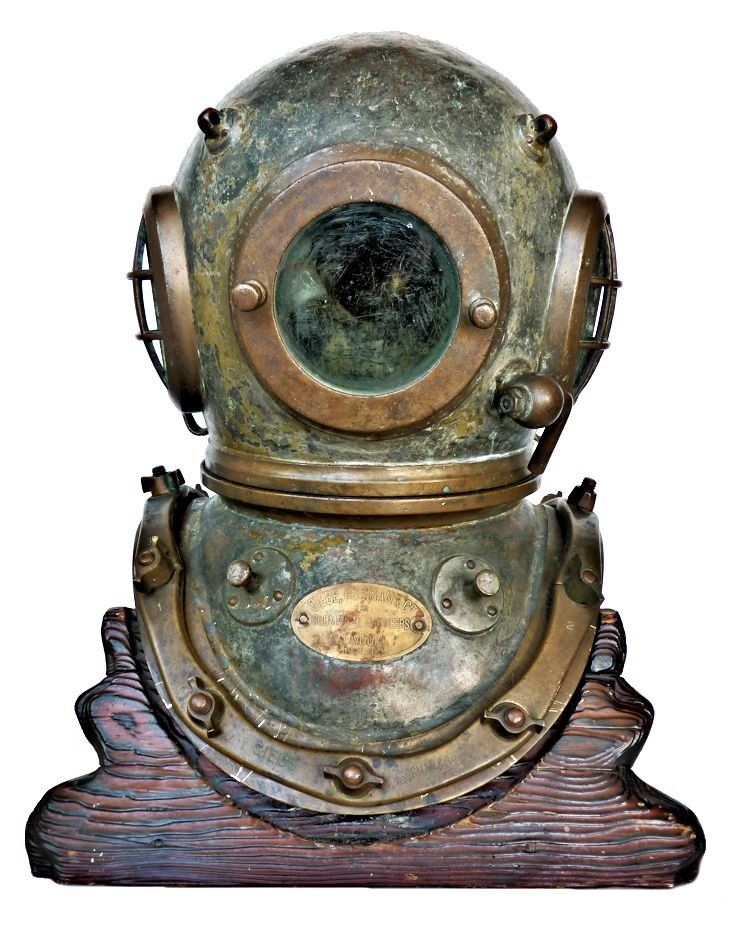
In 1840, August Siebe was the inventor of the deep sea diving helmet
as we know it today. His helmets are prized worldwide by collectors and divers with this helmet being a near perfect example.
SERIAL NUMBERS: Bonnet 178XX Breast Plate 178XX
TOTAL WEIGHT 48 lbs BONNET 25 lbs BREAST PLATE 23 lbs
STAND NOT INCLUDED
Presented is a 12 bolt, 3 light Siebe.Gorman helmet, Circa 1953, that comes from the collection of the former owner who was a second generation deep water diver who had a collectors’ compulsion of gathering everything he could related to diving. The helmet has a wonderful dark coloration which over many years has developed a pleasing patina of age over both the bonnet and breast plate which
have different numbers, only 43 numbers apart. A speaker was installed , but has been removed. The air vents
are all intact.The right side chin relief valve, spit cock handle, front door, and all wing nuts, all turn easily. There
is a check valve on the air supply. Except for numerous small dents which are evidence of lots of use, the
helmet has all original Siebe Gorman parts and is in very good condition.
Like
all used diving gear, this is being sold for DISPLAY ONLY. It should not be dived without having passed inspection by a certified
dive shop.
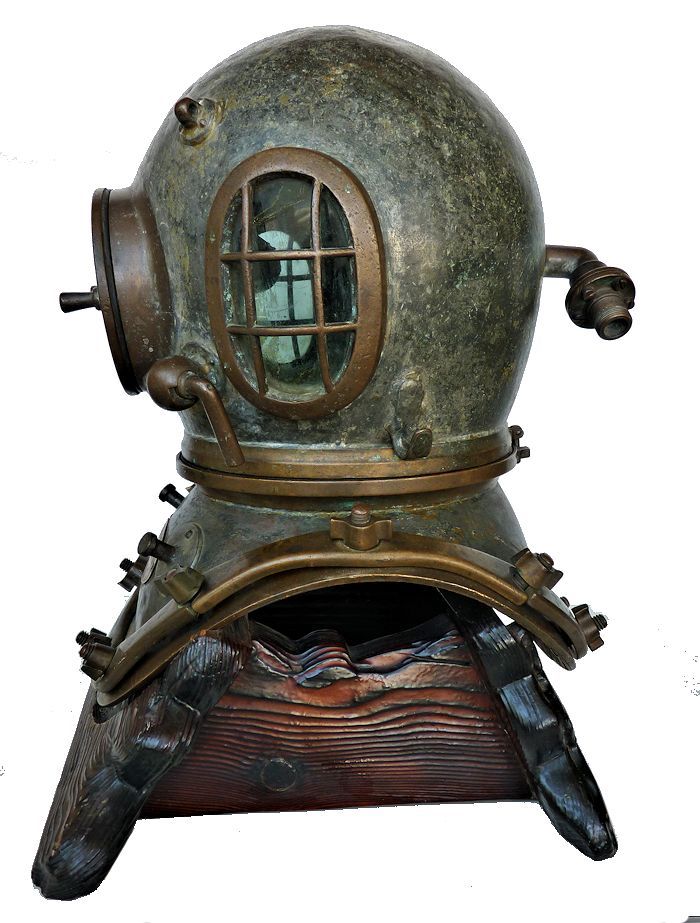
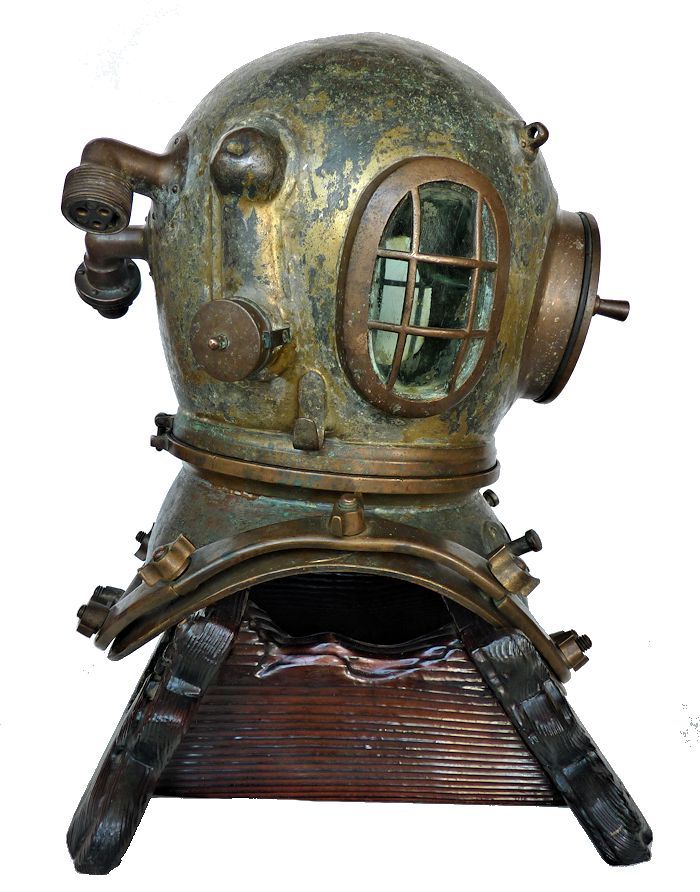 Right
Right
and left sides of this great looking Siebe Gorman 12 bolt dive helmet
PROVENCE:
From the estate of a hardscrabble character and second
generation hard hat diver and the son of a member of the salvage team of the 17 month project to refloat the French ocean
liner Normandie on the Hudson River that completed in 1947. Not only did the deceased have
an incredible hard helmet and diving equipment collection, he also, in his lifetime, managed to assemble an amazement of anything
diving related.
MAKER’S BRIEF HISTORY: Augustus Siebe the German-born founder of the firm which bears his name (1788-1872) is considered
“the father of diving”. Sib’s ‘closed’ diving helmet, first produced in 1840, allowed divers to
dive safely to greater depths than ever before. Attached to a rubber suit, it became the ‘Standard Dress’ that revolutionized
diving and made the underwater worker an essential part of both salvage operations and civil engineering. Many of the great
building projects of the Victorian era – bridges, tunnels and lighthouses still in use today – could not have been built without
divers. Sib’s design
was so successful that it remained in use essentially unchanged, by the Royal Navy until 1989. Born in Saxony in 1788 and
trained as a metalworker in Berlin, Siebe served in the Prussian army against Napoleon before emigrating to London in 1816.
He moved into 5, Denmark Street, a four-story house dating from the 1680s, in 1830. Located in St Giles-in-the-Fields, an
area which has had a long-standing connection with the metal-working trades, the property served both as his home and his
commercial premises. Continued.
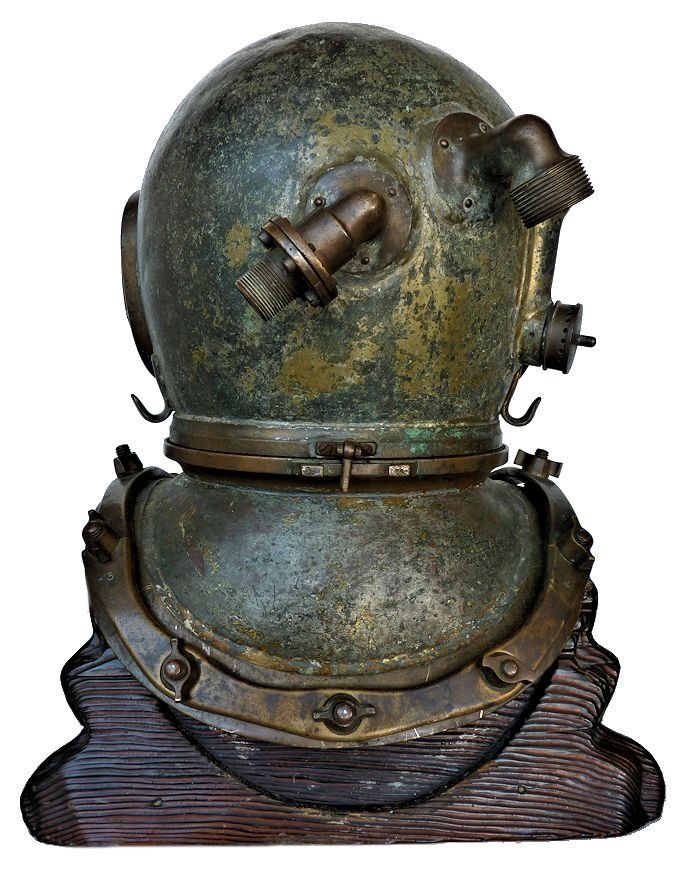 Back of helmet showing the comm
Back of helmet showing the comm
elbow far right and the air supply in the center Siebe manufactured
his first ‘closed’ diving helmet in 1840. Previously, divers had relied on ‘open’ helmets from which spent
air had to escape beneath the rim of the helmet or below the hem of the diver’s rubber jacket, increasing the risk of
drowning. Siebe’s ‘closed’ helmet was bolted onto a modified diving suit based on the open helmet dress, with
divers receiving air from a pump on the surface. The suit was watertight and thus safer than earlier types of diving dress.
Together with special pumps designed by Siebe, it made diving to a depth of about 25 metres possible. Siebe perfected
the design of his new diving suit during the salvage operations carried out between 1840 and 1843 on the warship HMS Royal
George, sunk in 1782. Following this practical experience of salvage work, his company became the known source for the
safest and best of diving systems. Siebe’s other
inventions include a dial weighing machine, a paper-making machine, and a rotary water pump. In 1850, he manufactured one
of the first ever ice-making machines. Siebe won numerous medals at the 1851 Great Exhibition and the 1855 Paris Exhibition,
and was elected an Associate of the Institution of Civil Engineers in 1856. Siebe died at 5,
Denmark St in 1872. His obituary described him as “retiring, kind of heart and honourable in all his dealings.”
The firm went out-of-business in 1999.
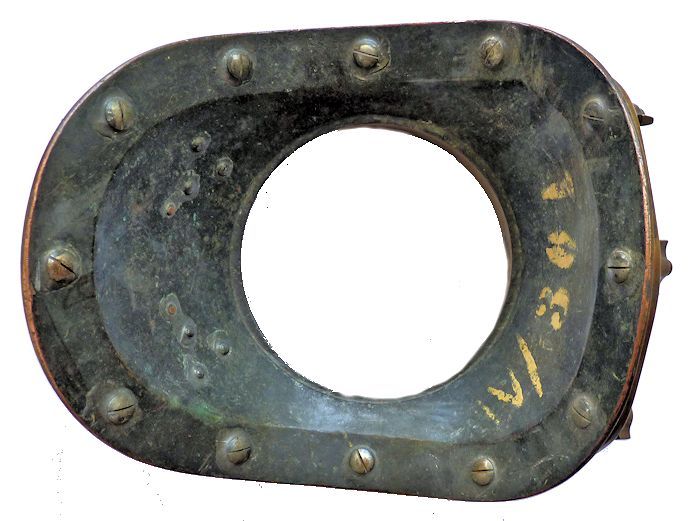
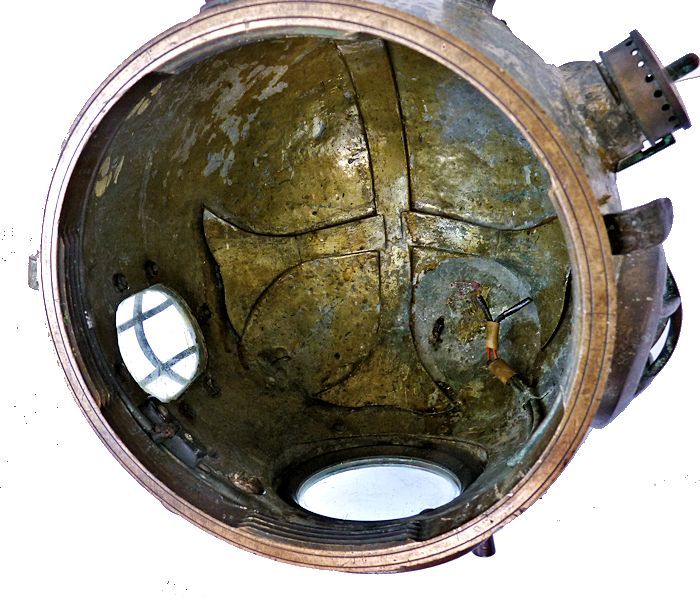 Bottom of corselet shown over the inside of the bonnet
Bottom of corselet shown over the inside of the bonnet
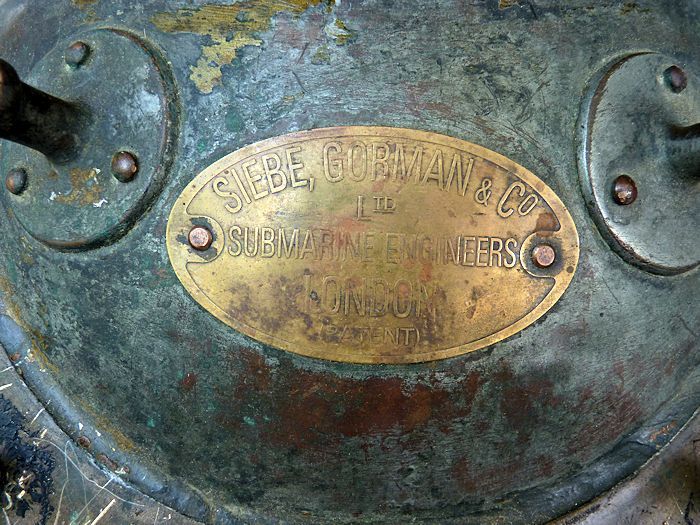 Siebe, Gorman maker’s tag
Siebe, Gorman maker’s tag
